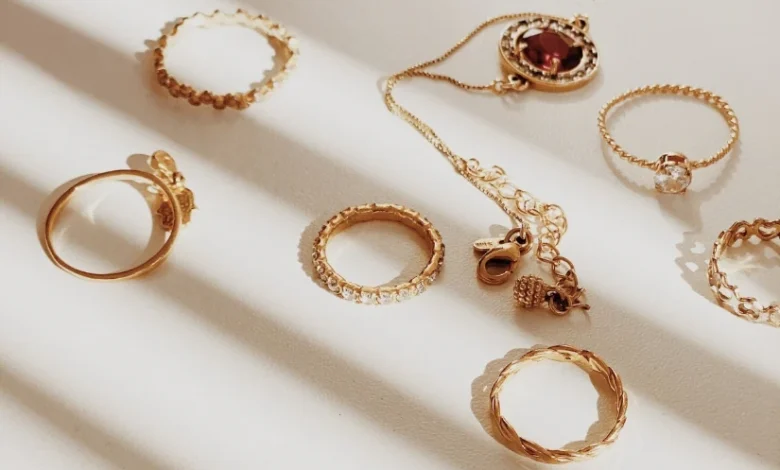How Many People does it Take to Complete a Piece of Jewelry

The love of beauty is shared by all. Jewelry is a favorite accessory. But do you know how many processes go into completing a piece of jewelry? Next, we will take you to reveal the jewelry you wear after how many people’s efforts to become to your hands.
Jewelry factories, regardless of their size, can be simply divided into four departments according to the division of labor: plate department, goldsmith department, inlay department, polishing, Qc. This is a general classification, according to the different processes can also be slowly subdivided.
Layout of a Printed Sheet
First of all, we introduce the edition department, which is the soul department of jewelry design. There are a lot of detailed divisions inside the department, such as hand-drawing, 3d, carving and waxing craftsmen, edition craftsmen and so on, each of them is responsible for different tasks. When we need to make a jewelry we need to have a design first, maybe it’s a drawing from a customer or a design from a jewelry designer.
The first step for a hand painter is to hand draw and color the design. Many jewelry designers do this step themselves. The next step is to do a 3d drawing, which shows more detail in the drawing, including the three-dimensional shape of the stone, the number of loose diamonds in the setting, and so on. Using this 3d drawing, the artisan can then calculate the approximate weight of the jewelry and see the approximate appearance of the jewelry. Due to technology, most jewelry drawings are still only able to produce symmetrical and simple styles. A successful 3d drawing will contain the appearance of the jewelry from all four angles. Next it comes into the hands of the hand carved waxer. Jewelry 3d wax spraying technology is now available, but it wasn’t before, so it used to be necessary for masters to handcraft their own molds for engraving jewelry.Jewelry in the formal production before, all have to go through the carving wax pressure mold this step. Pressure mold is a very test of a master’s skills. Carving good master carving candle jewelry is very accurate size and very vivid look, press out of the mold is also more accurate.
Finally, we would like to introduce an indispensable machine in the department – the vacuum wax squeezer. A mold can be made of a piece of jewelry before it is even set. Traditionally, the factory presses a rubber mold. By spraying the mold with wax and extruding it, a wax mold is created that is one size smaller than the original. These wax molds are then made available to other factories that need to modify them for mass production of jewelry.
Also read: How Long Does GOAT Take to Ship A Comprehensive Guide
Metalwork
The goldsmith’s department was also a fairly important department. After the wax molds are produced, the goldsmith department sends people to the inverting factory to invert the finished products. After the inversion is finished, the master will make some simple smoothing and modification to the corners that are not so good in the inversion effect. While looking at the design drawings, the master will refine the inverted molds where the finished products do not quite match the effect, and try to make them exactly the same as the design drawings.
Inlay Department
The work done by the stone setting department is also a bit tedious. Some workers will pick out the right size and color stones, a process called stone matching. The rest of the stones that are not of the right size need to be cut and polished by the stone turners to make them fit into the settings. The work of the matching and turning workers is very tedious, and they may have to select thousands of different sized stones every day. After selecting the right stones, the workers will hand them over to the setters. The setter’s job is the most difficult. The setter knows how to set all kinds of stones. Hard stones are good to set, but if some fragile stones are cracked during the setting process, the setter will inevitably take some responsibility. This is a risky task. For this reason, they tend to take out setting insurance if they are setting expensive stones. When setting very small stones, the setter needs to set them one by one with the help of a microscope and a setting ball, and the process is so slow that the best microsetters are able to set no more than 300 broken stones in a night.
Finishing Department
This department is well understood and its main task is to polish jewelry to make it shine. The master will be the metal part of the jewelry with a flywheel and a variety of abrasive paper fine polishing or brushing and sanding and other processes. If the customer asks for engraving it is also done with an engraving tool in this part of the process. Finally, the gemstones are thoroughly cleaned to ensure that they are delivered to the customer in the most perfect condition.
QC Department
This is a department in charge of quality control which is also known as quality inspection. No product can leave the factory without quality inspection. The product inspector needs to check whether there are still flaws in the jewelry, whether the gemstones are firmly set, whether the size is appropriate and other issues. If all this is fine, at this point, a finished piece of sparkling
jewelry is ready for some packaging and waiting to be shipped to the customers who are expecting them.
After all of this, you now understand how long a process a gemstone needs to go through to get from the factory to you. It is a process that goes through many steps and is the result of the hard work of many people. You may also have a deep interest and curiosity in gemstone setting, carving and other techniques, welcome to stay tuned to us and share more knowledge about it with you.



